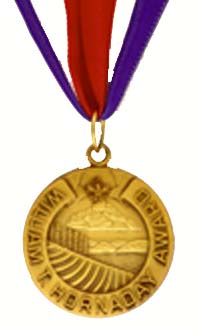How Applications Are Judged

The application, with supporting documentation, is the primary basis upon which decisions are made. The national Hornaday Awards Committee may grant as many awards as possible, provided the demanding expectations are met. Dr. Hornaday stated, "Unusual prizes are to be won only by unusual services."
On the application sheets provided in this booklet (or on photocopies), describe in detail how you came up with the idea, why you undertook the project (school project, community service, church project, etc.), how you planned it, how it was designed, how long it took, where it was done, the resulting environmental improvement, and how the project involved and influenced others. Describe how you gave leadership to the project. List help you received from organizations and professionals. Supporting materials (photographs, news articles, letters of appreciation, sketches) may be attached to the application in one separate, well-organized binder. Consideration is given to a neat, concise, organized presentation. Give special care to the appearance of the application and the correctness of all information provided.
All effort is made to protect and return original supplemental materials. The original application, however, is not returned. Applicants and councils should keep copies.
The Hornaday Awards Committee meets three or four times a year. Therefore, applicants must recognize the lead time involved.
Expectations
Applicants for the bronze and silver medals are expected to
- Describe the origination of the idea.
- State the purpose of each project and why the project was chosen.
- Conduct research, investigation, and study.
- Develop project plans.
- Implement and manage the projects.
- Demonstrate leadership and involve others.
- Describe how the project influenced the attitudes of others.
- Record the time and resources devoted to each project.
- Explain the relationships among projects, if projects are interrelated. Each project, however, must be from a different category of conservation, as described earlier.
Monitoring
Applicants for the Hornaday badge, bronze medal, and silver medal must work under the guidance of a conservation or environmental professional or qualified layperson in conservation.
Each project should be designed in part to publicize the need to conserve natural resources and to improve environmental conditions.
The council is encouraged to provide guidance and to identify qualified advisers. The role of the conservation adviser is to guide the young person into selecting significant conservation projects and to coach the youth into preparing, researching, consulting others, designing, planning, and giving leadership to others in carrying out the projects. The adviser must approve the application, indicating that the applicant's activities have been monitored and ensuring that the projects meet local needs. The applicant's unit leader must also approve.
The Hornaday Awards Committee expects applications to include detailed project descriptions that document the applicant's work.
Requirements for Venturers
Venturers applying for the bronze or silver medal are to complete all requirements for the medal as shown on the application, except for earning the merit badges. In place of merit badges, Venturers must
- Complete the ecology and plant and wildlife requirements for the Venturing Ranger Award.
- In addition to the required project documentation, as outlined above under "Expectations," provide specific information on:
- The research performed in connection with the conservation projects undertaken. The relevant research must be cited at the appropriate location in the conservation project documentation. A bibliography must be provided that lists sources cited. The bibliography must be formatted according to established standards.
- The applicant's entire Hornaday effort. This evaluation, included in the application in a separate section, should contain information on alternatives considered for each project and an explanation of why each specific conservation project was selected, procedures used, processes used, staffing levels used, funding requirements, and so on.
- The lessons learned. Included in the report in a separate section, this details what the applicant, in hindsight, would do differently on each project. The section should include recommended changes in project selection; procedures, processes, and staffing levels used; funding requirements; and evaluations of project effectiveness over time.
Screening
Applications are screened by a council committee composed of knowledgeable people aware of the needs, problems, and opportunities for conservation and environmental improvement in the local council area. Committee members will base their judgments on the work accomplished relative to the applicant's age and compared to the accomplishments of others in the community. The decision is based on several principal factors:
- How much the applicant has actually contributed to the improvement or better management of natural resources and the environment, and the extent to which the applicant has learned from that experience
- The leadership the applicant has demonstrated in the planning and execution of the project(s)
- The extent to which the applicant has encouraged other people to plan, understand, appreciate, and practice sound conservation and environmental protection methods
National Council Criteria in Judging
Review the major criteria used by the National Council in judging applications/nominations for the Bronze, Silver, and Gold Medals and the Gold Certificate.